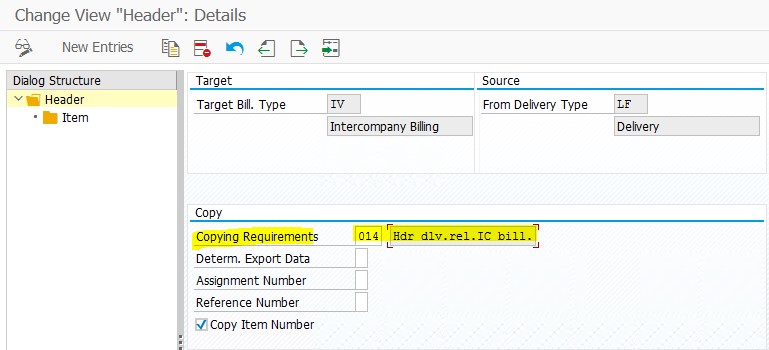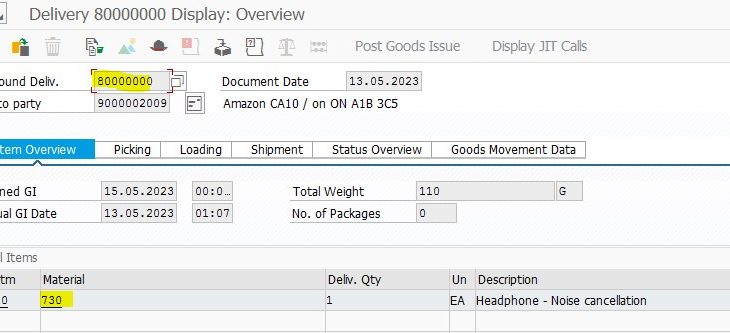The intercompany sales process and associated configurations can be complex and difficult to understand. While there are many sources of information available, it can be challenging to find clear explanations of how these configurations are relevant and how they can be used to achieve the desired results. In this post, aim to provide a comprehensive overview of the intercompany sales process and associated configurations, and explain the relevance and importance of these configurations from both a business and configuration point of view. By sharing our experiences and insights, I hope to make the intercompany process more understandable and accessible to all.
Objective:
- We will explore how to identify an intercompany sales order.
- how the system allows for the creation of two invoices?
- The routines and requirements associated with the pricing procedure and copy control.
- What is ‘Transaction specific Pricing procedure’ checkbox.
- Why two different pricing procedures are used
- How the system understands the quantities to be billed for partially delivered orders.
- Finally, how to set up the process in S4 Hana.
The intercompany sales process in SAP SD (Sales and Distribution) involves the selling of goods or services from one company code to another company. This process typically occurs when one company within a group of companies sells goods or services to another company within the same group.
In the below scenario One company code (US50) produces goods, and another company code (CA10) distributes those goods to customers. There is no manufacturing plant for CA10.
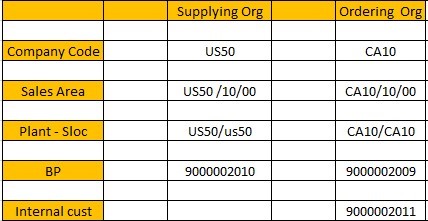
In this scenario, Sales Organization CA10 will receive an order from Customer 9000002009 for Material 730. However, since Plant CA10 does not have the stock available for this particular material, Sales Organization CA10 will fulfill the order by delivering the material from Plant US50.
Step 1 : BP/Customer – 9000002009 created.
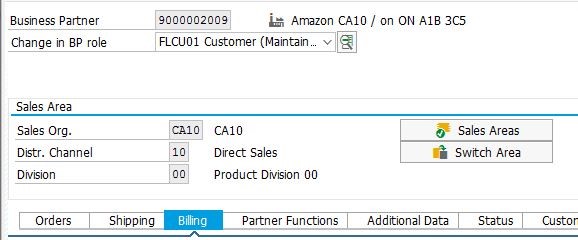

Step 2: Assign Plant- US50 to Sales org – CA10. So Sales Org- CA10 can place order to US50 plant.

Step 3: Material extended to both the plants.

Step 4: Define Order Types For Intercompany Billing
Path : SPRO –> Sales and Distribution –> Billing –> Intercompany Billing –> Define Order Types For Intercompany Billing
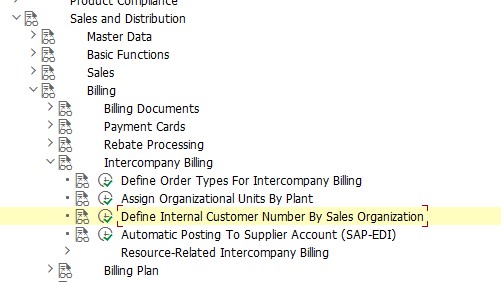
Assign sales document type with Intercompany billing type IV. Here we can restrict relevant document types to create Inter company invoice.

Step 5: Assign Organizational Units By Plant
Path : SPRO –> Sales and Distribution –> Billing –> Intercompany Billing –> Assign Organizational Units By Plant
The delivering plant utilizes these configuration to generate the intercompany invoice, using the internal customer number of the ordering sales organization.

Step 6: Define Internal Customer Number By Sales Organization
i ) Internal customer/BP – 9000002011 created for Supplying Sales area.
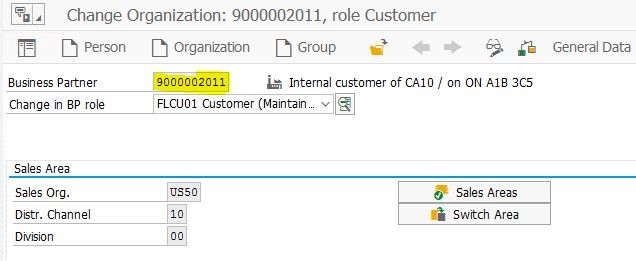

ii) Path : SPRO –> Sales and Distribution –> Billing –> Intercompany Billing –> Define Internal Customer Number By Sales Organization
The delivering plant using this configurations to process intercompany billing for this customer number.
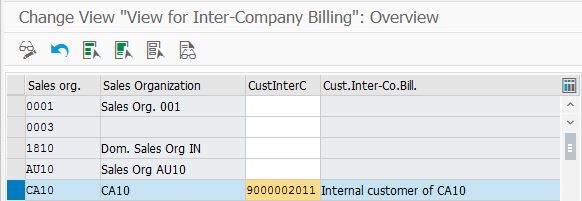
Step 7: Lets try to create a sales order with plant – US50, before setup all pricing components to validate all org structures.
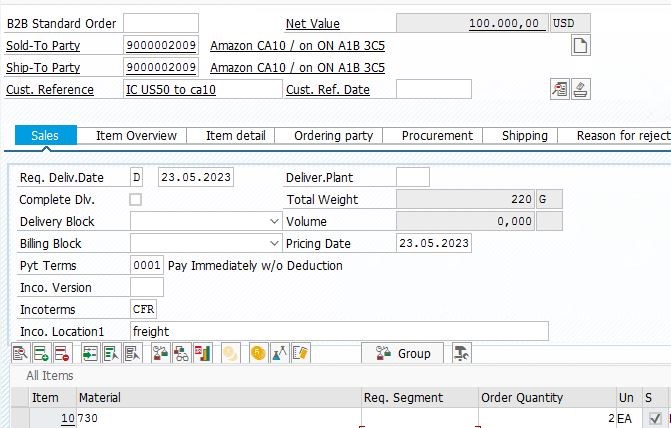
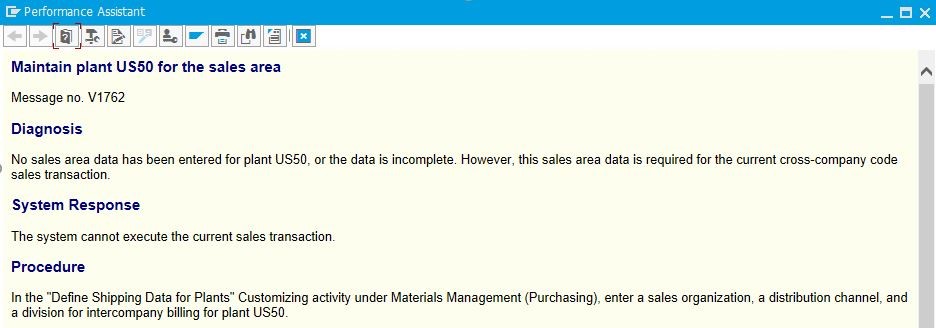
Getting error to maintain the plant. To resolve this issue follow the below path.
SPRO –> Materials Management –> Purchasing –> Set up Stock Transport Order –> Define Shipping Data for Plants
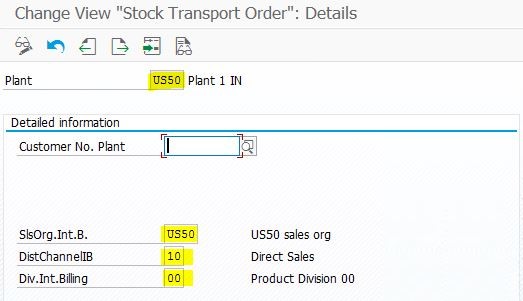
Now order can be created with Plant – US50.
Step-8: Determination of Pricing Procedure:
Procedure has been setup for CA10 and US50.
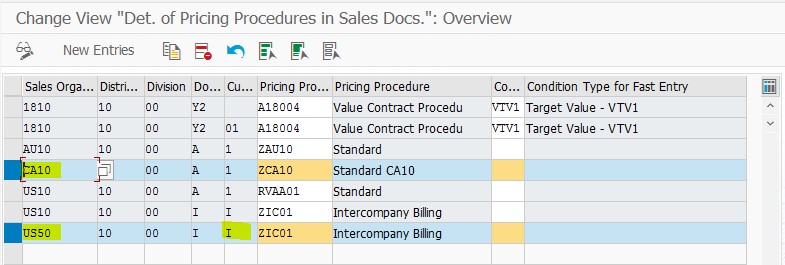
Here, a new Customer Pricing procedure (I) has been created for Intercompany Pricing Scenario.
i) Path to create new customer pricing procedure:
Logistics – General –> Settlement Management –> Basic Settings –> Pricing –> Define Customer Pricing Procedures.
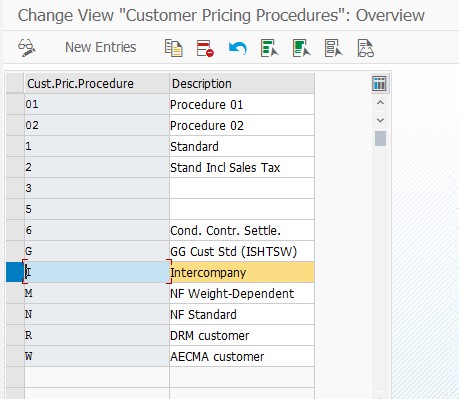
ii) Maintain Customer pricing procedure(I) for Internal customer, so that system should determine pricing procedure ZIC01 in case of Intercompany scenario.
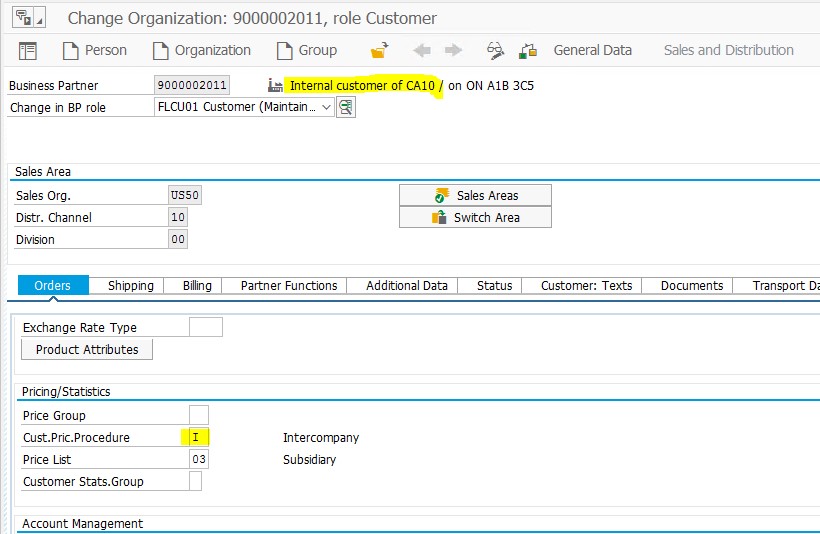
Step 9: Configure Pricing
Requirement: The price of US50 is 39,000/- per unit when sold to CA10, and CA10 sells it to customers at a price of 50,000/- per unit.
Lets see how can we achieve this requirement.
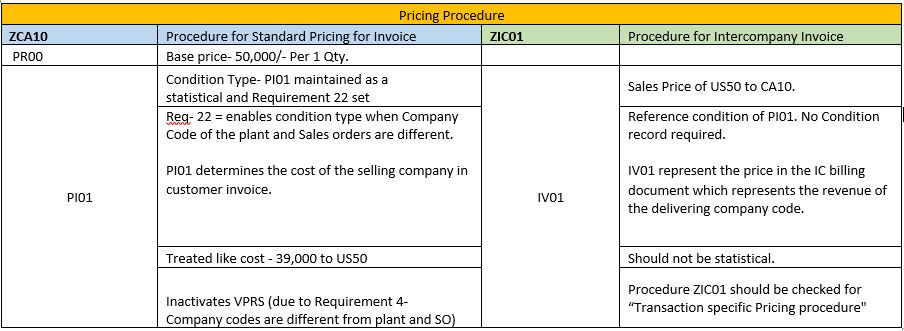
Condition value maintain for PR00, PI01 and IV01.


Setup IV01 condition type for intercompany billing which is a reference condition of PI01.
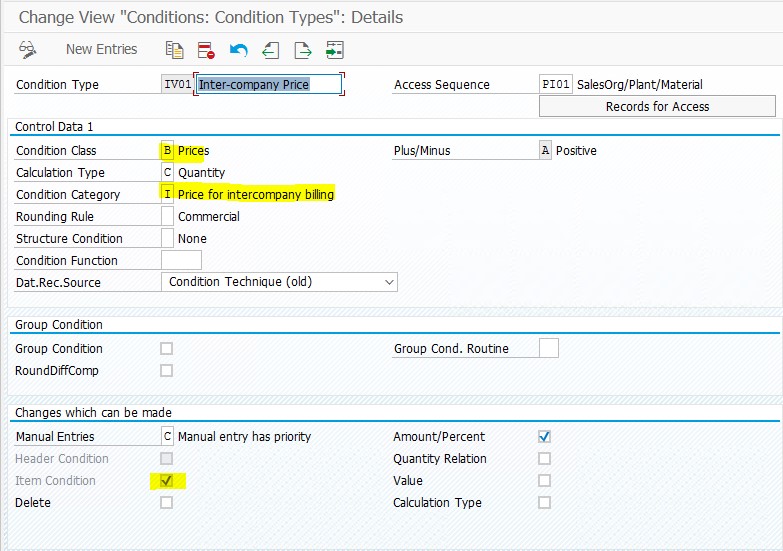
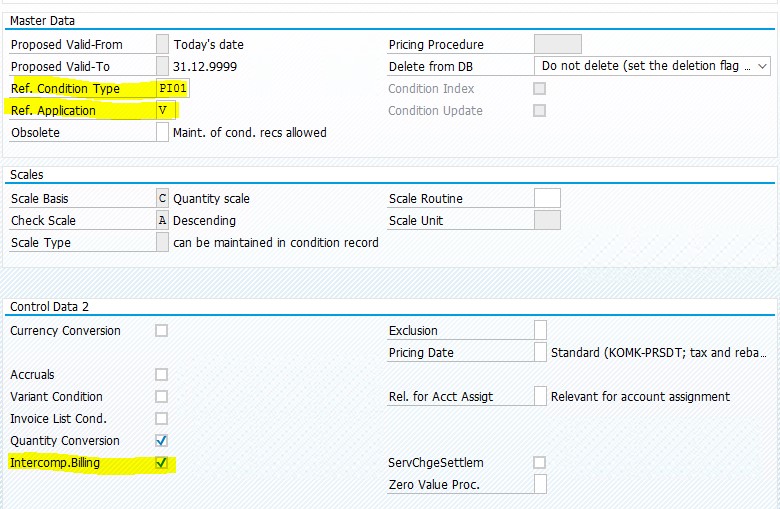
Setup condition- PI01 in procedure ZCA10 as a statistical condition ( cost of CA10) with requirement-22, so it can only be active once company code of plant and sales order will be different.
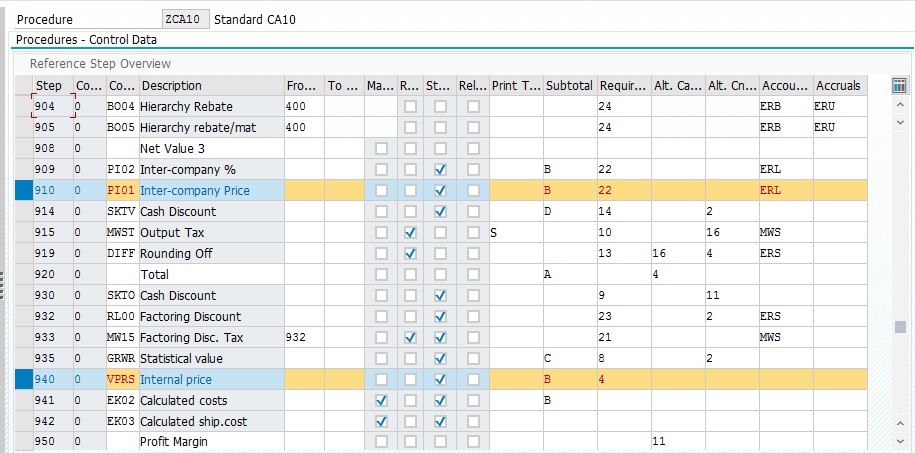
Maintain condition IV01 (which is a reference condition of PI01) within procedure ZIC01 with requirement 22 and its not a statistical condition as it will be the sales price for US50.
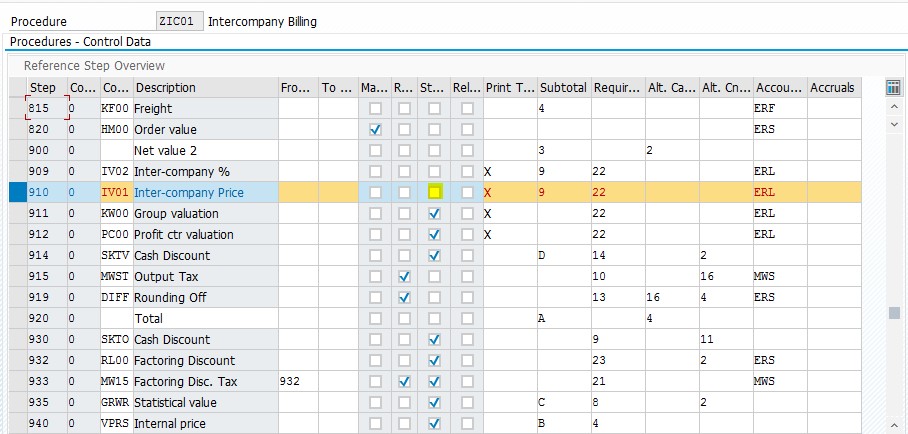
Check “Transaction specific Pricing procedure” checkbox for intercompany pricing procedure.

“Transaction specific Pricing procedure” checkbox :
Before the release of version 4.0, there was no specific pricing procedure in place for Intercompany Billing. Instead, we used the standard pricing procedure (RVAA01) for both customer billing and Intercompany Billing documents. To address this situation, a fixed program was implemented.
However, with the release of version 4.0, a new feature called “Transaction specific Pricing procedure” was introduced, providing greater flexibility for Intercompany Billing. SAP recommends using the standard procedure ICAA01 (document pricing procedure I) for Intercompany Billing documents. Although the previous fixed program was not completely removed for compatibility purposes, we still have the option to utilize the old program logic. This means that if we opt to use a separate pricing procedure for Intercompany Billing documents, we must use the “specific procedure.”
By using a different pricing procedure, we have the flexibility to exclude certain conditions, such as discounts and rebates, that may not be relevant for Intercompany Billing calculations.
Step 10: Create IC Scenario
Now lets create once order to invoice.
Order-5 has been created successfully with the details and pricing is showing correctly.
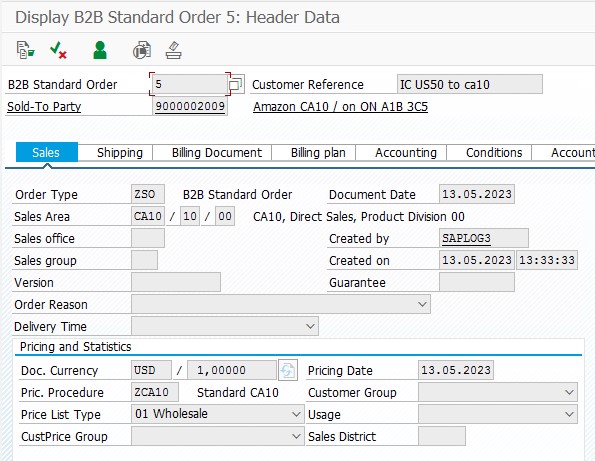
Here, PI01 correctly determines as a statistical condition which represents the cost price of CA10.
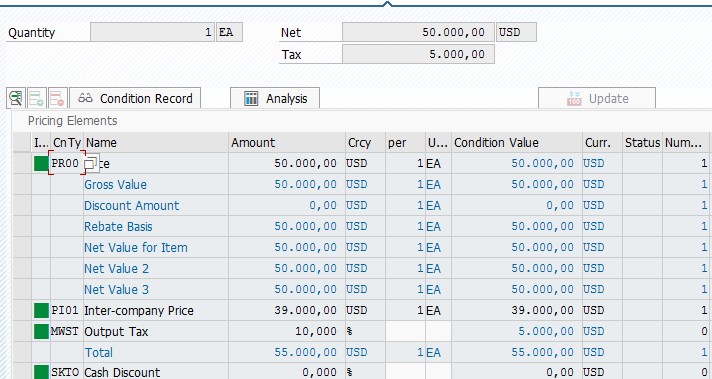
Create delivery and PGI.
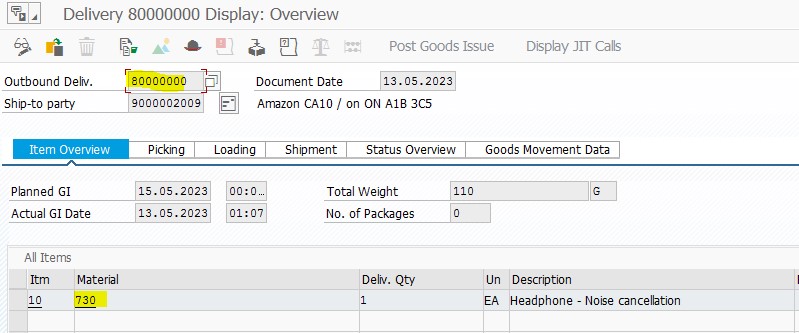
Now create standard invoice for delivery.
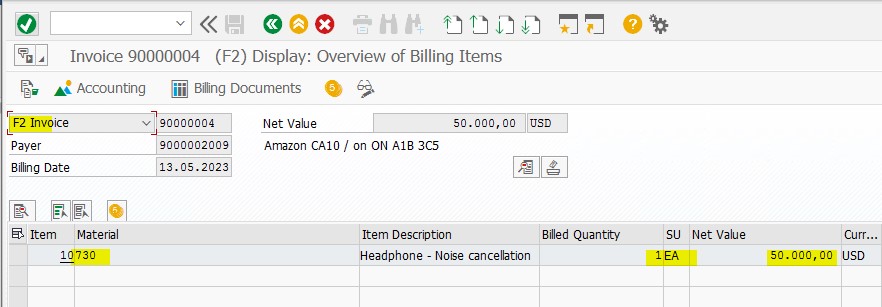
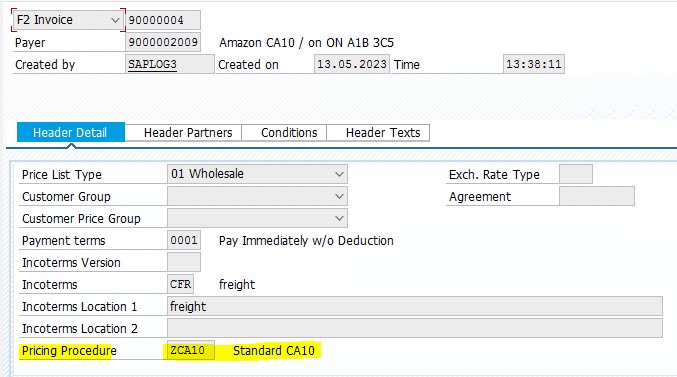
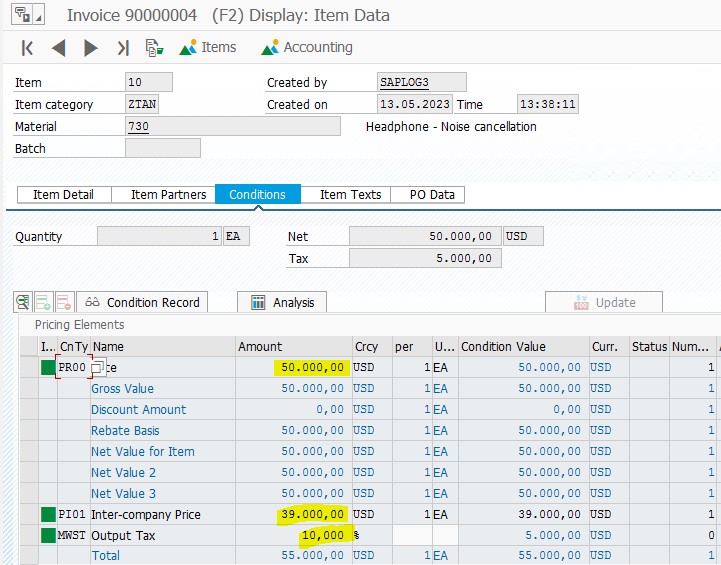
Now create invoice again against same delivery number.
Intercompany Invoice has been created.

As we see, Intercompany invoice has been created for internal customer for company code- US50 and pricing procedure- ZIC01.
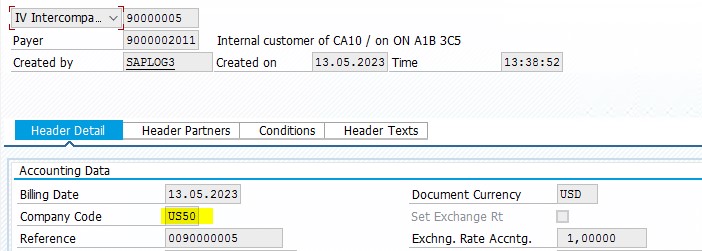

IV01 derives the amount from PI01 due to reference condition settings.
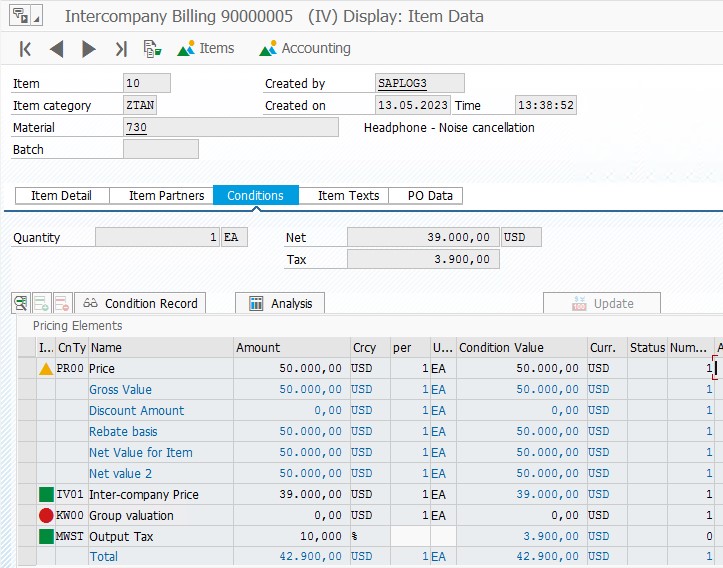
PI01 (cost from standard pricing procedure) become Sales price of intercompany invoice.
System allows to creates 2 invoices from single delivery due to below copy control setting. Requirement -014 also checks how may quantities actually delivered to customer from sales order.
